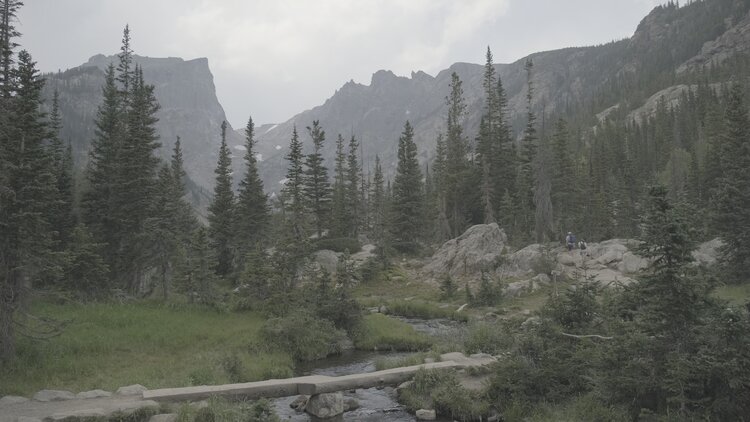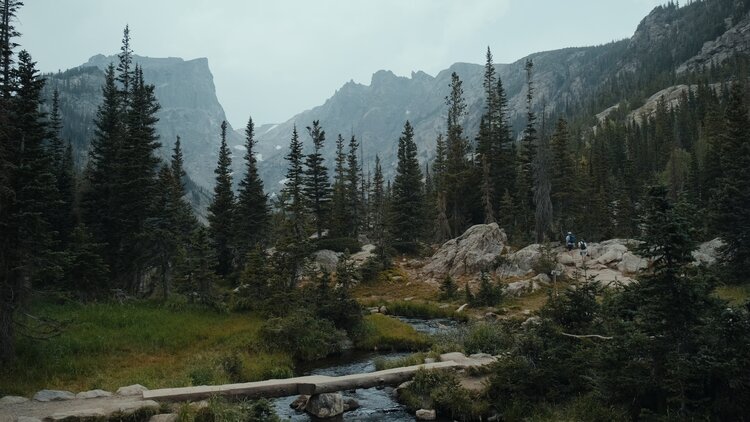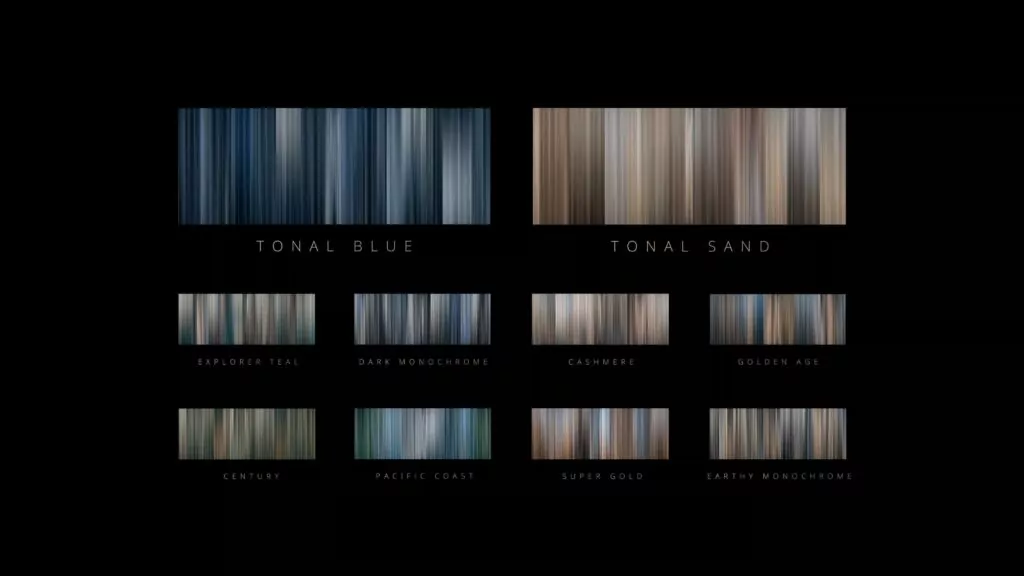How to Work With Log Creative LUTs

How to Work With Log Creative LUTs
Log (left) vs Rec.709 (right)
How to Work With Log Creative LUTs - Working with standard creative LUTs is pretty straightforward. Balance your footage, choose a creative look, apply the LUT and then adjust the intensity to taste. If you shot in a log format, working with conversion LUTs is equally simple. Apply your conversion first, then perform the proper adjustments, then apply a creative look if you want to.
But what about working with log conversion LUTs with creative looks built in?
This is where things can get a little tricky. Since the creative look is coupled with your log conversion, it’s not as simple as adjusting the intensity of the LUT to get the look you desire. This is because with any log conversion, it is not advised to change the intensity. Rather, you should make adjustments before the log conversion if you wish to change the color balance, saturation or exposure.
Using log creative LUTs can be a great way to save time in your workflow by completing two tasks in one simple step. However, it comes at the slight cost of flexibility and control of the final image.
In this article, I’ll be sharing 3 tips to work with and get the most out of your log creative LUTs.

Fuji F-Log (ungraded)

Graded image with F-Log Creative 03
Use the right LUTs for your camera and log profile
This seems pretty obvious, but there are many different “flavors” of log profiles and you want to make sure your LUTs were designed for the profile you are using. Even within the same brand, like Sony, you’ll find different formats designed for different purposes, for example S-Log2 and S-Log3. If you have mismatching LUTs to the format you shot in, you might run into issues like overpowering contrast, out of gamut colors, and inaccurate skin tones.
You’ll end up trying to make corrections to fight the LUTs rather than working with the LUTs to create the best image possible.

Make adjustments before the LUT
Since the log conversion is coupled with the creative look, you shouldn’t adjust the intensity of the LUT. If the LUT is too strong for your taste and you want to bring down the contrast and saturation, make adjustments to the image upstream from the LUT. This could be done simple in Resolve by creating a new node before the LUT node, or in Premiere Pro or Final Cut by creating a new color correction effect before the LUT effect. (By before I’m talking in terms of the image pipeline, not necessarily the order of operations.
By adjusting the source image that is being fed into the LUT correction, we can manipulate the output without changing the intensity of the LUT.

Shoot with the LUTs in camera
If you have the ability to load LUTs into your camera or monitor while you’re shooting, this will give you a huge advantage over how the final image looks. You’ll be able to make decisions on set based on your intended final look. This means you’ll be able to adjust lighting, exposure, and make set design and wardrobe to look the best it can be when sent through your creative look.
Since most cameras only allow you to apply one LUT, having the log conversion and creative look coupled into the same LUT is actually a huge advantage in this scenario.
Like all of the other equipment in your arsenal, LUTs are just another tool you can use to get the job done at the highest quality possible. Whether you’re using log creative LUTs to save time or preview a look in camera, you now have the tools to make the most of your image.
Mastering Log Creative LUTs for Efficient Video Editing
Mastering Log Creative LUTs: 3 Tips for a Seamless Workflow
Working with standard creative LUTs (Look-Up Tables) can be a straightforward process. You balance your footage, select a creative look, apply the LUT, and adjust the intensity to your liking. For projects shot in a log format, using conversion LUTs comes with a similar ease: you apply the conversion first, make your adjustments, and then layer on a creative look if desired.
However, when dealing with log conversion LUTs that incorporate built-in creative looks, the process becomes more nuanced. While this method can streamline your workflow, it may limit your control and flexibility. In this article, I’ll share three tips to help you effectively work with log creative LUTs and enhance your post-production process.
1. Understand the Limitations
One of the key aspects of using log creative LUTs is recognizing their limitations. Since the creative look is inherently tied to the log conversion, simply adjusting the intensity of the LUT is not advisable. With any log conversion, it’s recommended to make adjustments to your color balance, saturation, or exposure before applying the LUT. This ensures that you maintain the integrity of the log format and achieve a balanced image.
If you find a log creative LUT that you like but feel it’s pushing the colors too far, evaluate your adjustments beforehand. You might need to increase the exposure or reset your white balance. By doing so, you’ll have a healthier base for the LUT to work its magic, leading to a more satisfying end result.
2. Experiment with Layering
While using a log creative LUT might seem like a one-stop solution, it’s crucial to remember that combining multiple LUTs can yield unique results. If you find that a single log creative LUT isn't delivering the desired aesthetic, consider layering additional LUTs.
For example, you can apply a conversion LUT first to match your footage to a more neutral color space. Then, on top of that, you can add a creative LUT that enhances specific aspects of the image. This layering process allows you to maintain control over individual elements, such as color grading or contrast, while experimenting with creativity.
Moreover, you can create your own LUTs from adjustments you frequently make. By developing a personal library of LUTs that fit your style, you can mix and match them with log creative LUTs for an even more customized approach.
3. Utilize Adjustment Layers
Incorporating adjustment layers into your workflow is an efficient way to modify and fine-tune your work without permanent alterations. Once you’ve applied your log creative LUT, consider using adjustment layers to tweak components like contrast, brightness, or color grading.
This method provides a non-destructive approach to editing and allows you to experiment freely. If a particular change doesn't work as expected, you can easily revert back to your original LUT or settings. By keeping adjustments separate from the LUT, you help to preserve your color grading and ensure that any changes you make are adaptable.
Conclusion
Working with log creative LUTs can significantly enhance your post-production workflow by combining conversion and creative looks into a single step. However, it requires an understanding of their limitations and a strategic approach to editing. By knowing when to make adjustments, experimenting with layers, and utilizing adjustment layers, you can enhance the flexibility and control of your final image.
With these tips in mind, you’ll not only get the most out of your log creative LUTs but also elevate your overall editing process, leading to stunning results that reflect your creative vision. Happy editing!













